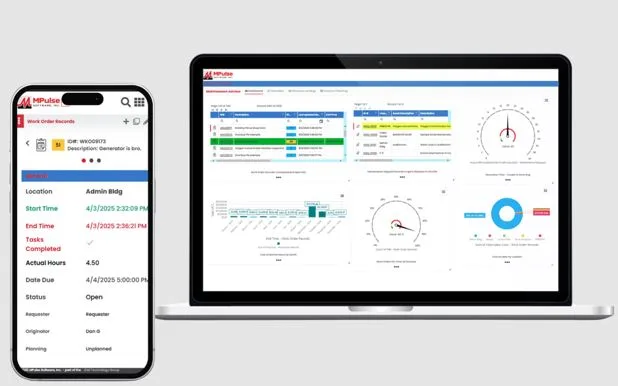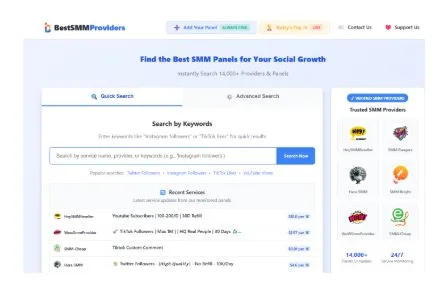Best Platforms to Improve Your English Grammar Skills (2025)
I’m Catalina Beatriz Ruiz, an English language educator and founder of ejerciciosdeingles.net, and I’ve spent the better part of the last year testing every major English grammar platform I could get my hands on.
Let me be honest with you: most of them either bore you to death with endless theory or throw random exercises at you without any real structure. But here’s the thing—grammar doesn’t have to be painful, and finding the right platform can make all the difference between giving up in frustration and actually making progress.
According to recent data from EC English, approximately 1.5 billion people worldwide are learning or using English, with grammar being one of the most challenging aspects for non-native speakers. With 142 countries including English as mandatory in their education policy, the demand for quality grammar resources has never been higher.
After spending months testing the most popular platforms (yes, I actually created accounts, completed lessons, and even paid for premium features), I’m ready to share which ones actually deliver results. Whether you’re preparing for IELTS, fixing your writing for work, or just tired of making the same mistakes, this guide will help you find the right tool for your needs.
Why Grammar Still Matters in 2025
Before we jump into the platforms, let’s address the elephant in the room: with AI writing assistants everywhere, do we still need to learn grammar?
Short answer: absolutely yes.
While AI can fix your mistakes, understanding grammar helps you think clearly, express yourself confidently, and catch errors that even AI misses.
Plus, you can’t exactly pull out ChatGPT during a job interview or a live presentation.
1. GrammarExercises.org – The Hidden Gem
Best for: Structured practice from beginner to advanced
I stumbled upon GrammarExercises.org about six months ago, and I’ve been recommending it to everyone since. This platform doesn’t get as much attention as the big names, but it’s genuinely one of the best free resources out there.
What I love about it:
- Expert-created content – Every exercise is developed by certified TESOL instructors and linguistics PhDs, which means you’re not getting random amateur content
- Clear progression – The platform organizes grammar by CEFR levels (A1 to B2), so you always know where you stand
- No registration required – You can start practicing immediately without creating yet another account
- Instant feedback – You get corrections and explanations right away, not hours later
- Completely free – No hidden paywalls or premium features, which is rare these days
What could be better:
- The design is pretty basic (it won’t win any design awards)
- No mobile app, so you’re stuck using the browser
- Limited speaking practice compared to interactive platforms
I’ve used it mainly for reviewing tricky grammar points like passive voice and conditional sentences. The explanations are concise without being oversimplified, and the exercises actually reflect how English is used in real situations.
My verdict: If you want solid, no-nonsense grammar practice without spending money, this should be your first stop. It’s perfect for self-study and exam preparation.
2. Grammarly – The AI-Powered Writing Coach
Best for: Real-time writing improvement and everyday use
Let’s talk about Grammarly. You’ve probably seen the ads, and yes, it’s popular for a reason. With 30 million daily active users as of 2024, it’s become the default grammar checker for millions of people.
What makes it stand out:
- Works everywhere – Browser extensions for Chrome, Safari, Firefox, plus mobile apps and desktop applications
- Unlimited checks – Even the free version lets you check as much as you want (no word limits like some competitors)
- Clean, intuitive interface – Zero learning curve; you’ll figure it out in minutes
- Tone detector – Helps you understand if your writing sounds friendly, formal, confident, etc.
- AI-powered suggestions – Goes beyond basic grammar to suggest better word choices and sentence structures
The downsides:
- Expensive premium – Around $12-30/month depending on your plan, which adds up
- Can be overly aggressive – Sometimes suggests changes that aren’t actually necessary
- False positives – Occasionally flags correct sentences as errors, especially with complex grammar
I use Grammarly every single day for emails, blog posts, and quick messages. The free version catches most spelling and basic grammar errors, but the premium version is worth it if you write professionally. The plagiarism checker has saved me from accidentally copying phrased content more than once.
My verdict: If you write a lot and need something that works seamlessly across all your apps, Grammarly is hard to beat. Just don’t trust it blindly—it makes mistakes too.
3. ProWritingAid – The Deep Dive Tool
Best for: Writers, content creators, and long-form content
ProWritingAid is Grammarly’s main competitor, and honestly, for certain users, it’s actually better. I tested it extensively with a 128-page manuscript, and the depth of analysis was impressive.
The strengths:
- 25+ detailed reports – Grammar, style, readability, overused words, sentence structure, pacing, and more
- Better for creative writing – Features like Manuscript Analysis and story pacing tools that Grammarly doesn’t have
- Lifetime plan available – Pay once, use forever (around $399), which beats subscription fatigue
- In-depth explanations – When it flags something, you actually learn why it’s wrong
- Integrates with Scrivener and other writing tools – Great if you’re serious about writing
The weaknesses:
- Steeper learning curve – The interface is more cluttered and takes time to master
- Can feel overwhelming – Too many reports and suggestions can slow you down
- Slower performance – Checking large documents takes longer than Grammarly
After using both, I’d say Grammarly wins for speed and ease, but ProWritingAid wins for depth and learning. If you want to actually understand your writing patterns and improve over time, ProWritingAid is the better teacher.
My verdict: Choose this if you’re working on novels, academic papers, or any long-form content where you want detailed feedback. For quick emails and casual writing, it’s overkill.
4. Cambridge Dictionary + Learning Resources
Best for: British English learners and those who trust traditional sources
Cambridge University Press has been teaching English since the 16th century, so they know what they’re doing. Their online resources are based on the Cambridge English Corpus—over 2 billion words of real English usage.
What they offer:
- Comprehensive dictionary – Clear definitions with British and American pronunciations
- Free grammar guides – Well-organized explanations of English grammar rules
- CEFR-aligned content – Perfect for those preparing for Cambridge exams (FCE, CAE, CPE)
- Word lists and quizzes – You can create custom vocabulary lists
- Trusted accuracy – No random internet explanations; this is the real deal
The limitations:
- Less interactive – More reading and studying, less practice
- No AI feedback – You’re on your own to apply what you learn
- Can feel academic – Not as engaging as gamified platforms
I turn to Cambridge Dictionary whenever I need to verify something or get a reliable explanation. It’s my go-to reference, but I don’t use it for daily practice because it’s not designed for that.
My verdict: Bookmark this for reference and exam prep, but pair it with a more interactive platform for regular practice.
5. EnglishCentral – Video-Based Learning
Best for: Visual learners who need speaking and listening practice
EnglishCentral takes a different approach: you learn grammar through authentic videos. With over 20,000 AI-supported videos covering 50+ topics, it’s like YouTube met a language school.
What works well:
- Watch-Learn-Speak method – You watch videos, learn vocabulary in context, then practice speaking the lines
- AI pronunciation feedback – The speech recognition technology actually helps improve your accent
- Live tutors available 24/7 – You can book one-on-one lessons with professional teachers
- Real-world content – Videos about news, business, travel, and pop culture, not boring textbook scenarios
- Good for exam prep – Includes content specifically for TOEFL, IELTS, and TOEIC
The drawbacks:
- Grammar is indirect – You learn through context rather than explicit lessons (which some learners don’t like)
- Requires subscription – Limited free access to videos
- Internet-dependent – You need good Wi-Fi for the video content
I’ve used EnglishCentral mainly for pronunciation practice and vocabulary building. The grammar improvement happens naturally as you repeat sentences and see patterns, but if you need to study specific grammar rules, you’ll need something else.
My verdict: Great supplementary tool if you’re tired of traditional exercises and want to improve grammar through real English content.
6. Duolingo – The Gamified Option
Best for: Complete beginners and casual learners
With 300+ million users, Duolingo is the most popular language app in the world. But is it actually good for grammar?
The pros:
- Completely free core content – You can learn without paying a cent
- Bite-sized lessons – Just 5-10 minutes per day
- Gamified and addictive – Streaks, achievements, and leaderboards keep you motivated
- Low pressure – Perfect for dipping your toes into English learning
- Grammar Lessons feature – They recently added dedicated grammar explanations (finally!)
The cons:
- Implicit grammar teaching – You’re expected to figure out patterns yourself, which doesn’t work for everyone
- Repetitive and sometimes weird sentences – “The cat eats the apple” won’t help you in real conversations
- Slow progress – You won’t reach fluency using only Duolingo
- Hearts system – Limited mistakes allowed unless you pay for Super Duolingo
- Can create false confidence – Completing the tree doesn’t mean you actually know the language
I tested Duolingo for three months, and here’s my honest take: it’s great for building habits and learning basic patterns, but terrible for understanding why grammar works the way it does. I found myself completing lessons without really knowing what I was learning.
My verdict: Use it as a warm-up or motivation tool, but don’t rely on it as your only grammar resource. It’s best for absolute beginners or as a supplement to more serious study.
Which Platform Should You Choose?
After testing all these platforms, here’s my recommendation based on your needs:
If you’re on a budget: Start with GrammarExercises.org for structured practice and use the free version of Grammarly for writing.
If you write professionally: Invest in Grammarly Premium or ProWritingAid (depending on whether you value speed or depth).
If you’re preparing for exams: Combine Cambridge Dictionary resources with GrammarExercises.org for targeted practice.
If you learn better through videos: EnglishCentral is worth the subscription cost.
If you want to build a daily habit: Duolingo can help you get started, but plan to add more comprehensive tools later.
The truth is, no single platform will magically fix your grammar. The best results come from combining resources: use one for structured learning, another for writing practice, and maybe a third for speaking. I personally use Grammarly for daily writing, GrammarExercises.org for targeted practice, and Cambridge Dictionary for reference.
Final Thoughts
Grammar isn’t something you master overnight. It takes consistent practice, patience, and the right tools. The good news? All the platforms I’ve mentioned actually work—if you use them consistently.
My advice: pick two or three platforms that fit your learning style and budget, then commit to using them for at least three months. Track your progress, notice which mistakes you keep making, and focus on those problem areas.
Remember, the goal isn’t perfection. Native speakers make grammar mistakes all the time. The goal is clear communication and continuous improvement.
What’s your experience with these platforms? Have you found others that work better? I’d love to hear your thoughts—drop a comment or reach out!
About the Author:
Catalina Beatriz Ruiz is an English language educator and founder of ejerciciosdeingles.net, where she helps Spanish speakers improve their English through practical exercises and honest reviews.






